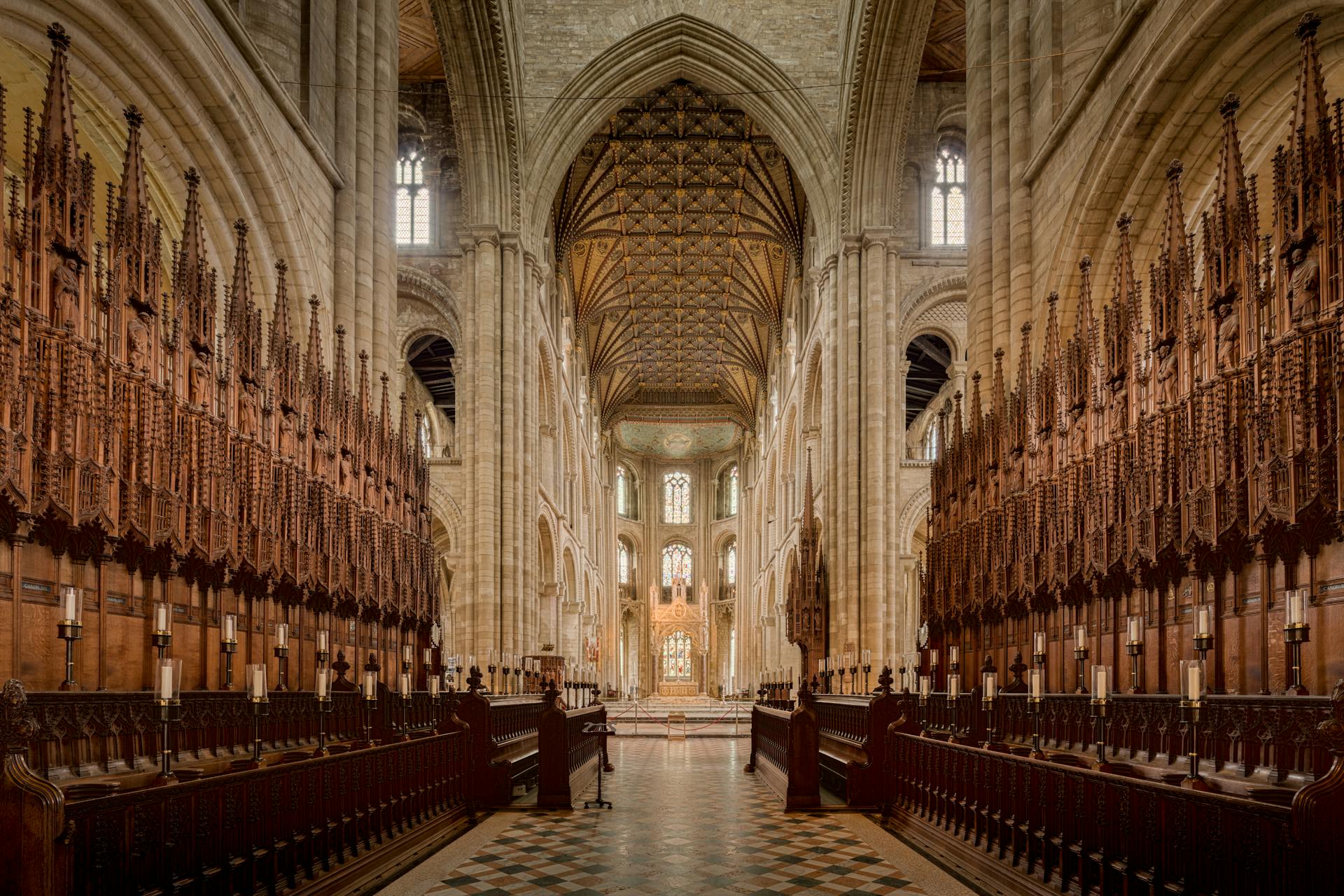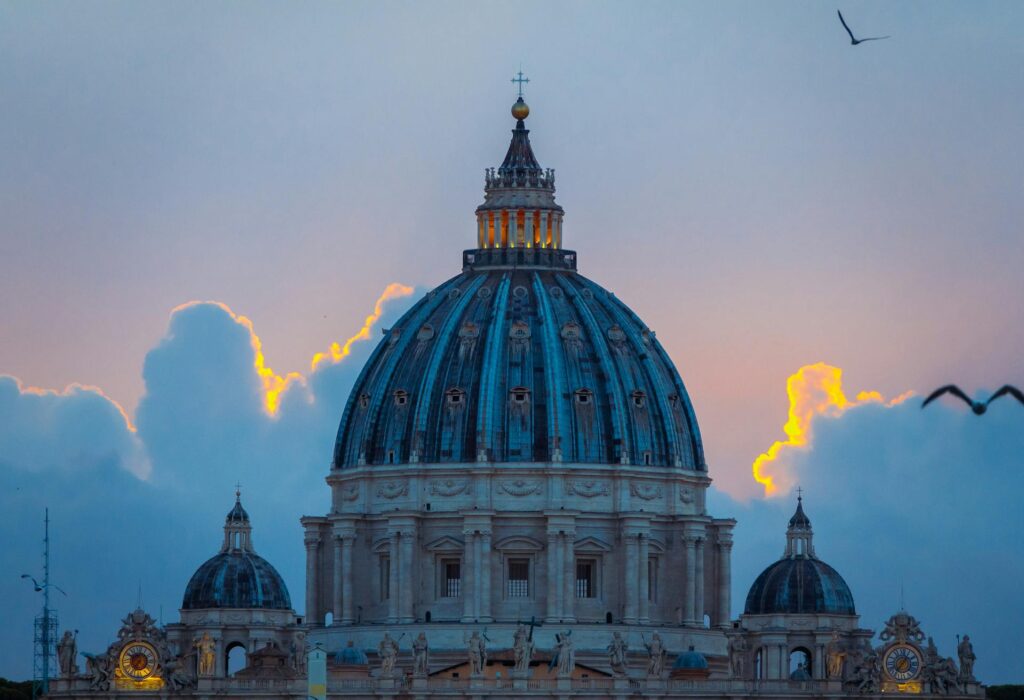Have you ever walked into a church and felt a sense of awe, wondering how such beauty and tranquility could be crafted by human hands? Christian architecture, with its intricate designs and profound symbolism, has captivated people for centuries. It’s not just about building structures; it’s about creating spaces that inspire faith and community. Today, we’re going on a journey around the world, exploring the diverse styles and rich history of Christian architecture. Whether you’re an architecture enthusiast or someone curious about different cultures, this cultural tour promises to enlighten and inspire. So, let’s dive into the fascinating world of Christian architecture!
The Origins of Christian Architecture
Christian architecture traces its roots back to the Roman Empire when Christianity was in its infancy. The early Christians, often persecuted, gathered in homes and secret places like the catacombs. These early gatherings didn’t require elaborate structures but focused on creating a sense of community. However, as Christianity became more accepted, the need for dedicated worship spaces grew. The basilica, originally a Roman public building, became the blueprint for many early churches. Its design, characterized by a rectangular layout with a central nave and aisles on either side, allowed for large congregations and became a symbol of the Christian faith.
As the faith spread, so did the architectural styles. The Byzantine Empire, with its love for domes and mosaics, influenced the development of church architecture significantly. The Hagia Sophia in Istanbul is a stunning example of this influence, combining massive domes with beautiful mosaics depicting Christian iconography. This period marked the transition from simple gatherings to grand architectural feats designed to honor the divine.
Gothic Architecture: Reaching for the Heavens
When you think of Christian architecture, Gothic cathedrals might be the first thing that comes to mind. Emerging in the 12th century, Gothic architecture is renowned for its pointed arches, ribbed vaults, and flying buttresses. These elements allowed architects to build higher and more spacious structures, filling them with light through stunning stained glass windows. The Notre-Dame de Paris and Chartres Cathedral are quintessential examples of this style, with their intricate facades and breathtaking interiors.
The Gothic style wasn’t just about aesthetics; it was deeply symbolic. The vertical lines and pointed arches were meant to draw the eyes—and the spirit—upwards, towards the heavens. The use of light was also significant, symbolizing divine illumination. Walking into a Gothic cathedral, one can’t help but feel a sense of transcendence, as if stepping into a sacred realm where heaven and earth meet.
Romanesque Architecture: Solidity and Serenity
Before the Gothic style took flight, Romanesque architecture laid the groundwork with its solid and robust design. This style, prevalent from the 9th to the 12th centuries, is characterized by thick walls, round arches, and sturdy pillars. Romanesque churches were built to last, reflecting the stability and permanence of the Christian faith. The Abbey of Saint-Denis in France and the Speyer Cathedral in Germany are renowned examples of Romanesque architecture, showcasing the grandeur and solidity of this style.
Despite its robustness, Romanesque architecture also introduced elements of beauty and serenity. The use of decorative arcading, intricate carvings, and majestic towers added a sense of grace to these formidable structures. The interiors often featured frescoes and sculptures depicting biblical scenes, serving as visual sermons for the congregations. This style laid the foundation for the more ornate Gothic architecture, while still leaving its own indelible mark on the architectural landscape.
Renaissance Architecture: A Return to Classical Ideals
The Renaissance was a period of revival, not only in art and science but also in Christian architecture. Inspired by the classical ideals of ancient Greece and Rome, Renaissance architects returned to symmetry, proportion, and geometry. This architectural style emphasized harmony and balance, reflecting the Renaissance’s pursuit of knowledge and beauty. St. Peter’s Basilica in Vatican City, with its grand dome designed by Michelangelo, stands as a testament to the Renaissance’s architectural brilliance.
Renaissance churches often featured domes, columns, and pilasters, drawing directly from classical antiquity. The use of perspective and proportion created a sense of order and clarity, inviting worshippers into a space of contemplation and reverence. This period also saw the rise of the central plan church, where the layout was symmetrical and often circular or polygonal, symbolizing perfection and unity. The Renaissance marked a shift towards humanism, yet it retained a deep spiritual connection, beautifully blending the earthly with the divine.
Baroque Architecture: Drama and Emotion
If the Renaissance was about balance and harmony, the Baroque was about drama and emotion. Emerging in the late 16th century, Baroque architecture aimed to evoke awe and wonder through its dynamic designs and elaborate ornamentation. This style was characterized by bold curves, grand staircases, and opulent decorations, creating a sense of movement and grandeur. The Church of San Carlo alle Quattro Fontane in Rome, designed by Francesco Borromini, exemplifies the Baroque’s dramatic flair with its undulating walls and intricate details.
Baroque architecture often used light and shadow to create dramatic effects, enhancing the emotional experience of the space. The interiors were richly decorated with frescoes, stucco, and gilded details, drawing the eye in a continuous flow of movement. This style was deeply rooted in the Counter-Reformation, as the Catholic Church sought to convey its power and glory through art and architecture. Baroque churches were designed to inspire and captivate, making the divine experience palpable for all who entered.
Modern Christian Architecture: Innovation and Diversity
In the 20th and 21st centuries, Christian architecture has embraced innovation and diversity, reflecting the changing times and cultures. Modern architects have experimented with new materials, technologies, and designs, creating spaces that are both functional and spiritually enriching. The Sagrada Família in Barcelona, designed by Antoni Gaudí, is a prime example of modern Christian architecture, with its organic forms and intricate details.
Contemporary churches often incorporate elements from various architectural styles, blending tradition with modernity. They focus on creating inclusive spaces that cater to the needs of diverse congregations, embracing sustainability and community engagement. The use of natural light, open spaces, and minimalist designs reflects a modern approach to spirituality, emphasizing connection and contemplation. Modern Christian architecture continues to evolve, pushing the boundaries of creativity while remaining rooted in its spiritual heritage.

Byzantine Architecture: A Fusion of East and West
Byzantine architecture represents a unique fusion of Eastern and Western influences, emerging from the Byzantine Empire’s capital, Constantinople. This style is known for its massive domes, intricate mosaics, and an emphasis on verticality. The Hagia Sophia, once a cathedral, then a mosque, and now a museum, is a masterpiece of Byzantine architecture, showcasing the grandeur and innovation of this era.
Byzantine churches often featured centralized plans, with a large dome supported by pendentives, creating a sense of openness and light. The interiors were richly adorned with mosaics depicting biblical scenes and saints, reflecting the spiritual and artistic achievements of the time. This style had a profound influence on Orthodox Christian architecture, with its emphasis on light, space, and decoration. The Byzantine tradition continues to inspire architects today, blending historical significance with timeless beauty.
Coptic Architecture: Egypt’s Christian Heritage
Coptic architecture, rooted in Egypt’s rich Christian heritage, offers a fascinating glimpse into the early development of Christian architectural styles. Emerging in the 3rd century, Coptic churches often feature basilica layouts, with wooden roofs and elaborate iconostasis. The Hanging Church in Cairo is one of the most famous examples, showcasing the unique blend of Egyptian and Christian elements.
Coptic architecture reflects the resilience and faith of Egypt’s Christian community, incorporating symbolic designs and intricate carvings. The use of local materials and techniques gives Coptic churches a distinctive character, while the emphasis on iconography and liturgical elements highlights the deep spiritual traditions. This architectural style continues to thrive, preserving and celebrating Egypt’s Christian cultural identity.
Ethiopian Architecture: Ancient Traditions
Ethiopian Christian architecture is renowned for its ancient and unique traditions, most famously represented by the rock-hewn churches of Lalibela. These churches, carved directly into the rock, stand as a testament to the ingenuity and devotion of Ethiopia’s Christian community. The Church of Saint George, with its cross-shaped design, is a breathtaking example of this architectural marvel.
Ethiopian churches often feature distinctive Aksumite architecture, characterized by stepped structures and intricate carvings. The fusion of indigenous building techniques with Christian symbolism creates a rich tapestry of cultural heritage. This style reflects Ethiopia’s long-standing Christian tradition, dating back to the 4th century, and continues to inspire awe and reverence with its sacred and historical significance.
Russian Orthodox Architecture: Onion Domes and Iconostasis
Russian Orthodox architecture is instantly recognizable by its iconic onion domes and vibrant colors. This style, which developed after the adoption of Christianity in Russia, combines Byzantine influences with local traditions. The Saint Basil’s Cathedral in Moscow, with its colorful domes and intricate details, is a symbol of Russian architectural prowess.
Russian churches are often designed with a central dome, symbolizing heaven, surrounded by smaller domes representing the apostles. The interiors are adorned with an iconostasis, a wall of icons and religious paintings, separating the nave from the sanctuary. This architectural style reflects the deep spiritual and cultural roots of Russian Orthodoxy, creating spaces that are both visually stunning and spiritually profound.
Latin American Architecture: A Blend of Old and New
In Latin America, Christian architecture represents a vibrant blend of indigenous and European influences. The arrival of Spanish and Portuguese colonizers brought Gothic, Renaissance, and Baroque styles, which were then adapted to local cultures and environments. The Cathedral of Mexico City, with its grand facade and rich history, exemplifies this fusion of styles.
Latin American churches often feature elaborate facades, detailed altarpieces, and vibrant murals, reflecting the region’s cultural diversity and spiritual fervor. The use of local materials and craftsmanship adds a unique character, while the incorporation of indigenous symbols and motifs highlights the blending of traditions. This architectural heritage continues to evolve, celebrating the rich tapestry of Latin American culture and faith.
Southeast Asian Architecture: A Cultural Exchange
In Southeast Asia, Christian architecture reflects a fascinating cultural exchange, with churches often incorporating local design elements and materials. The Catholic Church in Vietnam, for example, blends Gothic and Romanesque styles with traditional Vietnamese architecture, creating a unique and harmonious aesthetic. The Church of St. Joseph in Hanoi showcases this blend with its twin bell towers and intricate details.
Southeast Asian churches often feature open spaces and natural materials, reflecting the region’s climate and cultural practices. The use of local motifs and decorations adds a distinct character, while the integration of Christian symbolism highlights the universality of the faith. This architectural style embodies the spirit of cultural exchange, creating spaces that are both spiritually enriching and culturally resonant.
Conclusion
Christian architecture around the world is a testament to the diversity and richness of human creativity and faith. From the awe-inspiring cathedrals of Europe to the unique traditions of Africa and Asia, these sacred spaces reflect the cultural and spiritual heritage of communities across the globe. Each style, with its distinct features and historical significance, tells a story of devotion, innovation, and cultural exchange. As we explore these architectural wonders, we are reminded of the power of faith to inspire and unite, transcending borders and time. Whether you’re an architecture enthusiast or simply curious about the world, the journey through Christian architecture offers endless opportunities for discovery and wonder.

Recent Posts
15 Floor Plan Graphic Styles That Will Elevate Your Presentation Game
The Role of Shadows in Architectural Storytelling
When Furniture Becomes Architecture: Blurring the Line